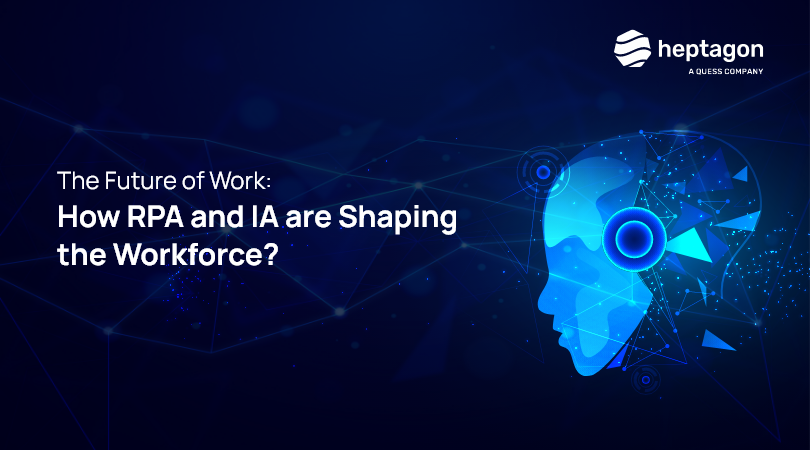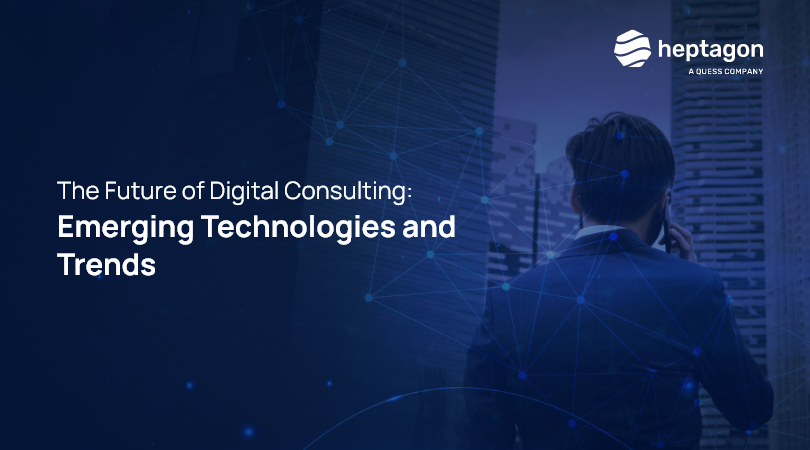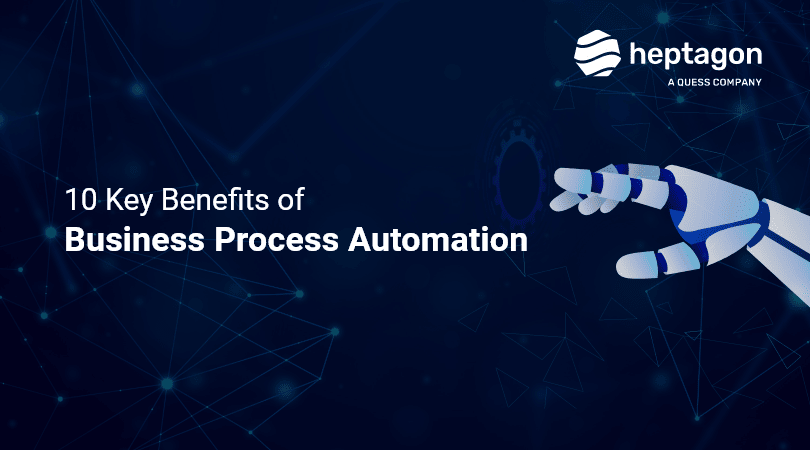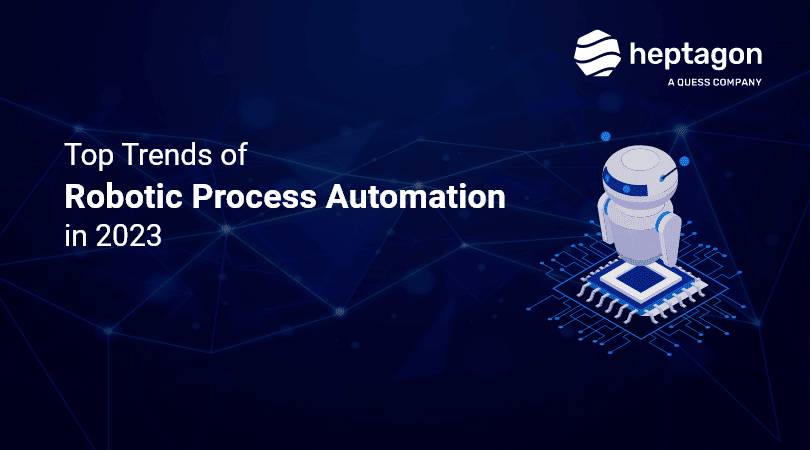The world is stepping into an AI era. The pace with which any work is done has improved significantly and there will be no room for slow-functioning repetitive or routine work. Two prominent technologies, Robotic Process Automation (RPA) and Intelligent Automation (IA), have gained significant attention in recent years. These technologies pave the way for many organizations to bring their imagination to reality and be big in the market. They have emerged as the key players in this transformational journey, revolutionizing industries and redefining the way people work.
Technologies that automate routine processes free up human workers to concentrate on more strategic and sophisticated duties. Routine jobs can be delegated to robots so that people can focus on higher-value tasks that call for judgement, decision-making, and creativity. As a result, job roles are redefined, and workers are made into important contributors who may lead to meaningful outcomes and have a big effect on their organisations.
This human-machine collaboration also promotes lifelong learning and growth. Employees have the chance to learn new skills that are in line with developing technology and organisational demands when certain activities are automated. Programmes for retraining and upskilling employees can help them efficiently use automation technology and adapt to a changing work environment. This makes it possible for workers to advance alongside technology, assuring their long-term employability and allowing businesses to fully use them.
Robotic Process Automation (RPA)
Robotic process automation, often known as RPA, is a technology that uses software “bots” to automate routine and rule-based operations inside corporate processes. By interacting with software, systems, and data sources, these bots are created to replicate human behaviour while doing jobs quickly, precisely, and consistently.
Since they are trained to adhere to preset rules and processes, data input, data extraction, form filling, report production, data reconciliation, and other repetitive operations may all be handled by RPA bots. They are adaptable to many platforms, applications, and systems and frequently do not necessitate significant modifications to the current IT infrastructure.
Intelligent Automation (IA)
Robotic process automation (RPA) and artificial intelligence (AI) technologies are used to create Intelligent Automation (IA), a more sophisticated type of automation. By adding AI algorithms, machine learning, natural language processing, and cognitive skills into automated operations, IA goes beyond the capabilities of conventional RPA.
IA adds cognitive and decision-making capabilities to the automation process. It makes it possible for robots to comprehend and interpret unstructured data, learn from experience, make wise judgements, and even communicate more naturally and intelligently with people.
IA uses AI technology to analyse massive amounts of data, understand complicated data, and carry out activities that call for cognitive function. Organisations can automate unstructured content-related tasks including sentiment analysis, language translation, picture recognition, and voice recognition.
How RPA differs from IA?
Businesses can automate processes using RPA (Robotic Process Automation) and IA (Intelligent Automation), two separate but related technologies. Despite their similarities, the two have some significant distinctions.
The main goal of RPA is to automate routine, rule-based actions inside corporate processes. It uses software “bots” that imitate human behaviour to interface with systems and applications. RPA follows a set of guidelines to carry out activities reliably and effectively. It operates based on predetermined rules and processes. It is made to handle jobs with distinct input-output connections and organised data. Significant advantages of RPA include higher output, decreased mistake rates, and enhanced operational effectiveness. But RPA alone lacks sophisticated cognitive capacities and the capacity to conclude unstructured data.
However, IA combines RPA with AI (Artificial Intelligence) technology, allowing computers to carry out increasingly difficult jobs and display cognitive capacities. It can handle jobs that require understanding and interpreting human language, spotting patterns in data, or making predictions based on past data since it can process and analyse text, picture, audio, and video data. IA is capable of picking up lessons from experience and changing its behaviour over time to perform better and better.
Benefits of RPA and IA in the Workforce
The workforce gains greatly from RPA and IA, which transform the way activities are carried out and improve human skills. Increasing productivity and efficiency are the key benefits. RPA and IA minimise the need for manual intervention by automating repetitive and rule-based procedures, lowering the possibility of mistakes and accelerating processes. Employees may then concentrate on tasks that are more strategic and valuable, which boosts productivity and increases efficiency inside businesses. Employees may focus their time and effort on jobs that call for critical thinking, creativity, and problem-solving after the load of menial work has been lifted.
Scalability and flexibility in labour operations are made possible by RPA and IA. These automation technologies use software bots that can be readily taught and scaled up or down to accommodate different workloads. Without having to make major modifications to their infrastructure or hire more staff, businesses may swiftly respond to fluctuations in demand. Businesses may use this freedom to work more effectively, respond quickly to client requests, and allocate resources wisely, eventually increasing operational agility.
Cost savings are yet another important benefit of RPA and IA in the workplace. The labour expenses associated with manual labour can be reduced for businesses by automating repetitive processes. The software robots work nonstop and continuously, which eliminates the need for sizable human labour. Businesses may reap substantial financial rewards from this cost-saving potential, freeing up funds to devote to other endeavours like innovation, staff development, or strategic projects.
RPA and IA help procedures be more accurate and compliant. Human mistake is unavoidable, especially when doing repetitive jobs. However, the margin for mistakes is significantly decreased by task automation technology. Additionally, these systems offer audit trails and access restrictions, which improve adherence to rules and security guidelines. Risks are reduced and organizations are helped to uphold regulatory requirements and data integrity.
Exploring the Economic Impacts of Automation
Automation gives out a transformative force that has the potential to reshape industries, labour markets, and economic systems. As automation technologies like RPA and IA continue to advance, their impact on productivity, efficiency, and cost structures becomes increasingly evident. By automating repetitive and routine tasks, businesses can achieve higher levels of operational efficiency, reduced costs, and increased output. Automation streamlines processes, eliminates human errors and enables organizations to scale their operations to meet growing demands. This increased efficiency and productivity can lead to significant economic gains, as businesses optimize their resource utilization and allocate human capital to more strategic and value-added endeavours.
Automation’s economic effects do present certain difficulties, though. There is a chance that the workforce will be disrupted and jobs may be lost when susceptible jobs are automated. To ensure that the advantages of automation are fairly distributed and that people have the chance to reskill and upskill to adapt to the shifting labour market, it is critical to negotiate this transition carefully.
To conclude, the future of work is being shaped by the transformative power of Robotic Process Automation (RPA) and Intelligent Automation (IA). The workforce may gain a lot from these technologies, including more productivity, scalability, lower costs, enhanced accuracy, compliance, and employee empowerment.
Employees are given more time to concentrate on higher-value jobs that require critical thinking, creativity, and problem-solving by automating menial work. They have the chance to pick up new skills that are compatible with developing technology, allowing them to adjust to the shifting workplace and stay valuable assets for their companies.



